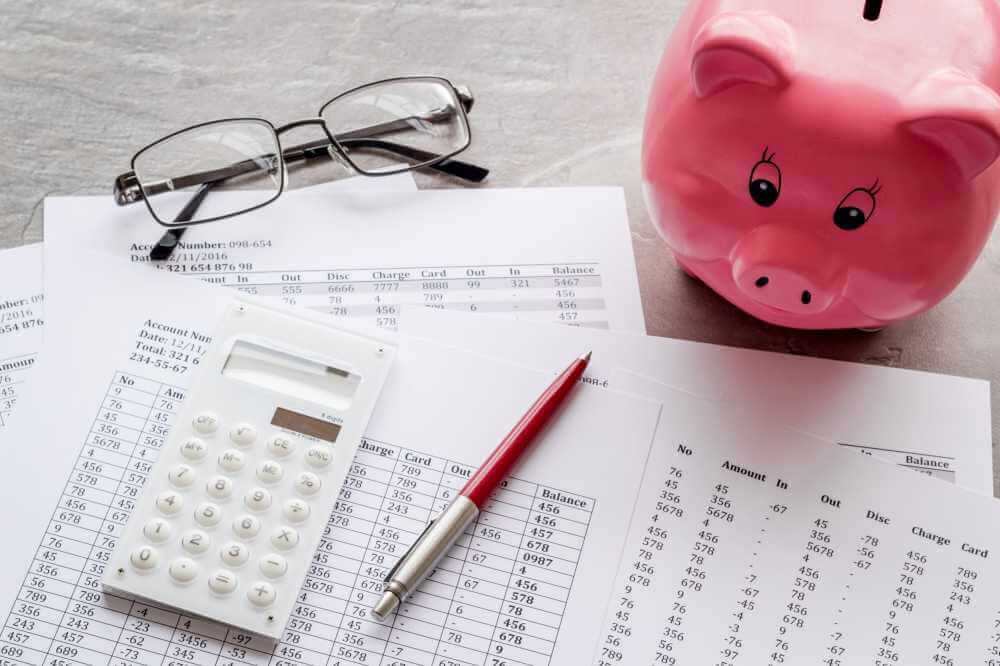How Much Car Allowance Can You Claim Without Receipts
Can you claim tax without receipts?
Do you claim tax deductions when you don't have a receipt? Claiming with no receipt is becoming a lot more risky because the ATO is much better at data matching, but in some cases it is okay! Let's dig into this and try to avoid ATO troubles.
Tax deductions are the main way you can improve your tax refund. Deductions add fairness to the tax system; if you have to spend extra money that connected with how you earn a living, then you get something back for that.
The ATO requires that you keep a receipt for every expense that you purchase and want to claim on your tax return. But what happens if you don't have a receipt? What if you lost it, or it's so faded that you can't read it?
The ATO works hard to find mistakes on tax returns. With more tools and access granted to them every year, it's getting easier all the time. So, if you think you can get away with a few extra deductions or leaving off your side-gig income, think again. In the coming years we expect the ATO to use AI technology to catch out people who are claiming a lot of expenses without proof.
It's no secret that everyone wants to claim a deduction for the business expenses they've tallied up throughout the year. But what do you do when you have no receipts to show for your purchases? Well, the good news is that the Australian Taxation Office (ATO) makes allowances for receipt-free deductions for some items. You can claim up to $300 for these expenses (in total, not per item).
Many Australians miss out on hundreds of dollars each year because they've lost the receipt for work-related deductions they can claim back. But if you've lost the receipt, you still make a claim.
Understanding when you need a receipt to claim a tax deduction is important in getting the best possible tax return. Throwing away receipts or not recording expenses appropriately can cost you a lot of money. For the most part, you must have written evidence to claim a tax deduction based on expenses incurred. But, there are a few exceptions.

When Do You Need a Receipt to Claim a Tax Deduction?
You are required to provide written evidence to claim a tax deduction if your total expense claims exceed $300. If your total expense claims total less than $300, the provision of receipts is not required at all, but you are still required to explain how you came to this figure.
There are also strict rules as to what constitutes written evidence; the ATO will only accept the following:
- Documentation is written in English if the expense was incurred inside Australia.
- A receipt from the supplier of the goods or services, a receipt must document the following:
- Name of the supplier
- Amount of the expense
- What the goods or services are
- Date expense was incurred
- ABN of supplier
In place of a receipt, the following documents are also acceptable, as long as they contain the above information:
- Bank statements
- Credit card statements
- BPAY reference numbers
- Email receipts
- PAYG payment summary
- Paper or electronic copies of original documents
Evidence recorded by you without a receipt is only acceptable for:
- Small business expenses of $10 or less, as long as the total of these expenses do not exceed $200
- If you were unable to acquire written documentation, e.g. parking tickets where you cannot keep the original ticket (but we urge you to take a photo!)
- Again, the summary of expenses must contain all the information listed above.
For most tax deductions claimed with the Australian Tax Office (ATO), you'll need to hang on to your receipts as evidence of your expenses. However, there are still several items you can claim without the need for a paper trail.
The ATO did not make any major updates to claims without receipts. So, it's good news for individuals who need to enter a similar range of expenses to those that they had last year. Knowing what you can put down in your tax return without a proof of purchase is crucial to getting the best tax return possible.
What Expenses Can I Claim Without Receipts?
Travel expenses
If you're self-employed and use your private vehicle for work-related activities – such as travelling between job sites or offices – don't worry, you won't need to hoard all your fuel receipts. Instead, keep track of how many km you make in work-related trips throughout the financial year and claim a deduction using the cents per kilometre method. It's worth noting that the ATO caps tax deductions using the cents per kilometre method to 5,000km of travel per financial year. If you think you travel more than this, you'll need to keep a logbook – which is easy enough with the right app.
Uniforms and clothing
You can claim up to $150 each year on laundering clothing you buy for work. This includes branded uniforms, protective gear, such as boots or sunglasses, and high-visibility clothing. You can also claim for any additional dry-cleaning fees you've incurred to keep work-related clothing clean.
Home office expenses
Working from home certainly has its advantages but, as most sole traders would know, the costs of bringing your work home with you can start to add up over time. That's why the ATO allows the rate per hour method – a fixed rate of 52 cents per hour for each hour you spend working from home (or 80c using the COVID-19 shortcut method). This covers all home office expenses you'd be eligible for with receipts – rent, electricity, internet, equipment, furniture – as well as the decline in value of equipment, such as desktop or notebook computer. Using the rate per hour method means you won't be able to make additional claims for any relevant home office expenses you do have receipts for.
For most Australians, work and travel expenses will make up the bulk of tax deduction claims, most of which require written evidence due to the large amounts involved. Thankfully though, there are still several deductions you can make at tax time which won't require it.
If you spend time throughout the year working from home (even if it's only here and there) you can make a range of claims. One you can make without a receipt, however, is an ATO general allowance of $0.52 per hour. This covers requirements like power, heating and cooling, and depreciation of an office desk and chair. For everything else – internet, stationery and technical devices – you'll need to claim them individually and ensure you have the proof of purchases to back it up.
Travel expenses that come under a travel allowance and aren't beyond the reasonable travel amounts as set out by the ATO. This is especially applicable to long distant truck drivers who spend many nights away from home and operate under a union award.
Utilising the km based method to claim motor vehicle expenses related to when you have been required to use your private motor vehicle for work-related activities does not require you to retain receipts. Instead, a diary of the work-related of trips and estimated km's travelled during a year is all that is required.
Meals at Work
While we'd all love the ability to write off all those delicious lunches with friends at the expensive place near your office, the ATO doesn't quite allow that.
If your role includes overtime meal allowances though, you're in luck. Provided it's within the reasonable amount set by the ATO and you receive a bona-fide allowance, you can claim these without needing a receipt. Just make sure you check your industry award and work entitlements to see what you're eligible for.
The Receipt-Free Limit
Firstly, it's important to understand the ATO's threshold for work-related expenses without a receipt. You are required to provide written evidence to claim a tax deduction if your total expense claims exceed $300. If your total expense claims total less than $300, the provision of receipts is not required at all. There is, however, a range of claims for eligible work-related expenses that can be made without the need for receipts.

Good record keeping = simpler tax return
Getting into the good habit of keeping your receipts will save you a lot of time and stress at tax time. For a self-employed person, in particular, every cent counts, and that includes how much tax you pay at the end of the financial year. Fortunately, there are plenty of great accounting tools out there that make record-keeping easy.
Understanding what you can and cannot claim without a receipt is useful when it comes to meeting your tax obligations. If you're still not sure, avoid the hefty fine of getting it wrong and ask a professional for advice.
Claim Tax Deductions Without A Receipt
Check your inbox
Many product and service providers send receipts by email instead of providing paper copies, so check your emails, text messages and PayPal receipts to see if you have a soft copy.
Check your bank statements
Generally, the Tax Office will classify your credit card statement itemising the purchase as acceptable evidence, as long as you have a diary entry or notes detailing the date and store you purchased from and the statement is clear. A generic supermarket receipt will not be enough to claim stationary or petrol.
Contact the retailer
It's worth calling or visiting your retailer with your payment information such as the credit card you use to pay for an item, to see if they can find and print a copy of the receipt.
Modify faded receipts: If the ink is starting to fade on a receipt you have hung onto, try taking a photo of it and use editing software to boost the contrast on the image. Or you could try holding the receipt at arm's length and blasting it with a hairdryer to make faded ink more visible.
Review booking confirmations: Travel expenses from a few months back that you haven't been reimbursed for should be claimed. You can use hotel and airline booking confirmations as evidence, and even restaurant bookings or menus can be useful in providing evidence of meal expenses.
Know which items you don't need a receipt to claim: The Tax Office doesn't expect you to keep receipts for every small-ticket item that qualifies as a work-related deduction. If your total claims don't exceed $300, you don't need written evidence of the expense.
Use standard calculation methods: The Tax Office uses a few standard calculations, such as allowing a fixed rate of .45¢ per hour if you're working from home for home office expenses. You don't need a logbook or receipts to claim up to 5000 work-related kilometres at a rate of 0.72¢ per km. You can also claim $1 per load for washing or dry-cleaning work uniforms and .50¢ for mixed loads of washing. You don't have to record every wash, but you do need to show a reasonable calculation to justify your claim.
What the ATO does NOT accept as proof for deductions with no receipt
It's important to mention that there are some forms of evidence the ATO will never accept when you try to claim a work-related tax deduction without a receipt. These include:
- Paying for something using cash. "I have no records, I paid cash" is not an excuse, as far as the ATO is concerned. If you say that to them, they will disallow your deductions.
- Having an item with a price tag attached, but no evidence you purchased it. The price tag doesn't mean anything in this case.
- A catalogue or advertisement with the price of an item, but no evidence you purchased it.
How Much Can I Claim With No Receipts?

The ATO generally says that if you have no receipts at all, but you did buy work-related items, then you can claim them up to a maximum value of $300.
Chances are, you are eligible to claim more than $300. This could boost your tax refund considerably. However, with no receipts, it's your word against theirs. The ATO says, no proof, no claim, so keep your receipts year-round. Otherwise, you're sort of stuck below that $300 limit.
Even if you only claim below $300, you should be ready to explain what it was, how you paid for it, and how it is related to your work.
Claiming deductions without a receipt can be a tricky part of doing your tax return and it is certainly not recommended. Often this means you lose out on tax deductions, or even cause some ATO trouble for yourself.
It's both easy and important to keep your receipts throughout the year so you never miss out at tax time; this will save you money.
When Can You Claim a Tax Deduction Without a Receipt?
When claiming expenses where receipts are not required, you may be asked to explain why the claim is reasonable based on your occupation.
You can claim a tax deduction without a receipt in the following circumstances:
- Laundry expenses to maintain eligible protective clothing or uniforms up to and amount of $150
- Travel expenses that come under a travel allowance and aren't beyond the reasonable travel amounts as set out by the ATO
- Home office deduction of $0.52 per hour should you be required to undertake any of your work activities at home
Exceptions for Claiming a Tax Deduction Without a Receipt
There are special circumstances in which you can claim a tax deduction without a receipt when you would normally need one. Any exemption provided under these circumstances is at the discretion of the Commissioner who will decide if the evidence you have supplied is enough to make a claim. This evidence must amount to more than just a written or spoken declaration that you are entitled to a tax deduction.
The circumstances where you can make claims for unsubstantiated tax deductions are:
- Where there is sufficient evidence to prove you're entitled to a tax deduction despite the lack of acceptable written evidence
- Where there was a reasonable expectation that written evidence would not be necessary
- Where the written evidence has been lost or destroyed, and you have taken reasonable steps to prevent this from occurring.
The expenses that can be claimed under these special circumstances are:
- Work expenses
- Business travel expenses
- Only applies to expenses incurred by individuals or partnerships that include one individual
Not understanding the laws regarding written evidence is not an acceptable reason to not provide a receipt if required.
If your written evidence has been lost or destroyed, you can only claim a tax deduction if:
- You have a complete copy of the original acceptable document, or there is reasonable evidence to suggest that creating a copy was not possible
- The destruction or loss was not a result of carelessness
While there are special circumstances in which you can receive a tax deduction without necessary evidence, it's important to remember that any exemption you receive is entirely at the discretion of the Commissioner. It is a lot easier to keep a receipt than to go through the process of proving your entitlement to the ATO.
Useful Tips
Collecting paper receipts is not the most optimal system, and the ATO understands that sometimes things can happen and receipts can be lost or destroyed. Our advice is to take pictures of everything and keep it in cloud storage.
For this reason, if you can show the ATO that you've done everything possible to stop this occurring, they have the ability to waive the receipts requirement. Similarly, if you reasonably did not assume that a receipt was needed for a purchase or if there's enough evidence to show you are entitled to a deduction without one, the ATO can take this into consideration also.
It can be a hassle asking for receipts everywhere you go, and people often put off doing their tax to avoid rounding up the tiny papers littered throughout their cars, wallets and office drawers. But if you're organised, doing your tax can be easy and quick. By understanding what you can claim as well as what you don't need receipts for, you'll make the process much easier both during the year and at the end of it. And for those claims that do require proof, there are now many apps you can download for smartphones and computers to help keep track.
How Much Car Allowance Can You Claim Without Receipts
Source: https://www.bookkept.com.au/how-much-tax-can-you-claim-without-receipts/
0 Response to "How Much Car Allowance Can You Claim Without Receipts"
Post a Comment